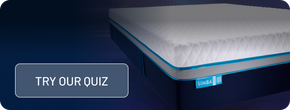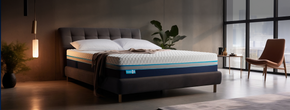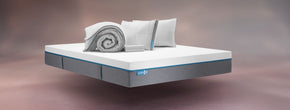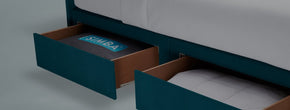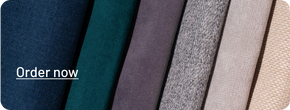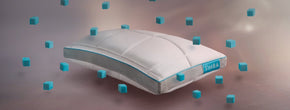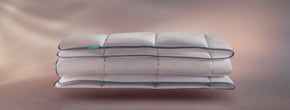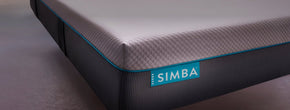How to check for dust mites and get rid of them

The idea of there being little nasties hiding in ourmattressesis rather unpleasant. One of the most common of these are dust mites. Not only are these tiny houseguests unwelcome, but they can cause all sorts of allergic reactions. In this guide, we’ll be going through everything you need to know about dust mites - what they are, how to check for them, and how to get rid of them.
What are dust mites?
Dust mites are microscopic creatures known as arthropods. They can live between 30-90 days depending on whether they are male or female. Dust mites like to eat dead human skin cells, so are attracted to places in the home where these build up. Think carpets, furniture, and bedding. They also like warm and humid environments. You can see why they are drawn towards beds and mattresses.
What do dust mites look like?
Dust mites are white, and so tiny that they can’t be seen by the naked human eye. Under a microscope, they look a little bit like very small spiders or ticks. Like their cousins, they have eight legs too.
How do you know if you have dust mites?
Dust mites are prevalent, and it’s likely that they’ll be some present in your home. They are something to be notably concerned about if you are allergic to them. Dust mites can aggravate allergies, as well as asthma. Their exoskeletons and faeces are what we tend to react to.
An allergic reaction might appear as red, itchy bumps that are sometimes referred to as ‘bites’. However, dust mites themselves don’t bite - this is in fact a rash . Other allergic reactions include sneezing, coughing, as well as itchy eyes, throat, and skin. If you find yourself having these types of reactions and can’t trace it to another source, it may be that you have dust mites.
Where do dust mites come from?
Dust mites are everywhere, and don’t come from one particular place. These arthropods are attracted to warm, humid, and dusty environments. Our homes are therefore a perfect haven for them. Mattresses are particularly tempting to dust mites, as we spend so much time in them. And therefore, there can be a lot of dead skin cell build up. It’s important to recognise that dust mites can be found in even very clean homes. They’re prolific, and not a sign of living in a particularly unclean home. There’s nothing to be ashamed of if you have dust mites.
How to get rid of dust mites
It’s unlikely you’ll be able to get rid of all dust mites, but keeping your bed clean and hygienic will help lower their numbers and prevent allergic reactions. The good news is that you don’t need to do any specialist cleaning routines to remove them. Regular cleaning of your mattress, bedding, furniture, and carpets is all you need to do. This includes dusting, washing, and vacuuming. Reducing the humidity in your home can also help getting rid of dust mites. Products like dehumidifiers can aid in this. Using a ventilator can also help too.
How to get rid of dust mites in your mattress
If you are wanting to get rid of dust mites from your mattress, follow these easy and simple steps:
- Before you start, check your mattress’s cleaning instructions. You don’t want to cause accidental damage.
- Remove all bed linen and sheets, and pop them in the wash.
- Use a steam cleaner, and drag it closely over the mattress surface.
- Ensure the mattress surface doesn’t get too wet, otherwise it’ll stain.
- If you have a sunny bedroom, try to expose your mattress to direct sunlight. Not only can the sun dehydrate dust mites, it can also kill them.
- Allow it to fully air dry before you put bedding back on.
Other preventative measures you can take to reduce the amount of dust mites getting into your mattress include using a mattress protector. This can act as a protective layer, and make it harder for dust mites to reach it.
What other irritants can be found in mattresses?
It’s not only dust mites that can cause allergic reactions and irritants. Here’s what else might be causing unpleasant reactions in your bed.
- If your mattress is older and has been damp, there’s a good chance it may be harbouring mould spores. Not only is mould unpleasant to sleep on, it can also trigger allergic reactions and asthma. This is why it is very important that when cleaning your mattress, you ensure it fully dries.
- Pet skin cells - dead skin cells, also known as dander, can build up further if your pet gets into your bed. This can attract dead skin cells, as well as aggravate any allergies you may have. It should also be noted that if your pet has fleas, these fleas can transfer onto your mattress.
- Carpet beetles. These creatures, as their name implies, tend to be found more in carpets and rugs. However, occasionally they can be found in beds. Whilst they are unlikely to harm humans, they eat animal-based fabrics and can therefore cause damage to your mattress.
- Bed bugs. These are tiny insects that burrow deep into your mattress, and bite you whilst you sleep. You can tell if you have bed bugs by the little red bite marks they leave. You might also find reddish brown marks in your bed sheets - this is what is left behind when they’re crushed.
Like with dust mites, the best way to to get rid of these irritants is to take preventative measures. This includes regular cleaning of your mattress and bedding, and ensuring that everything is completely clean before you get into bed.
"Perfect mattress! I’ve been sleeping so great since we got it."- Abby L, Hybrid® Mattress
"The mattress and pillows have changed my sleep completely!"-Jonathan L, Hybrid® Pro Mattress
